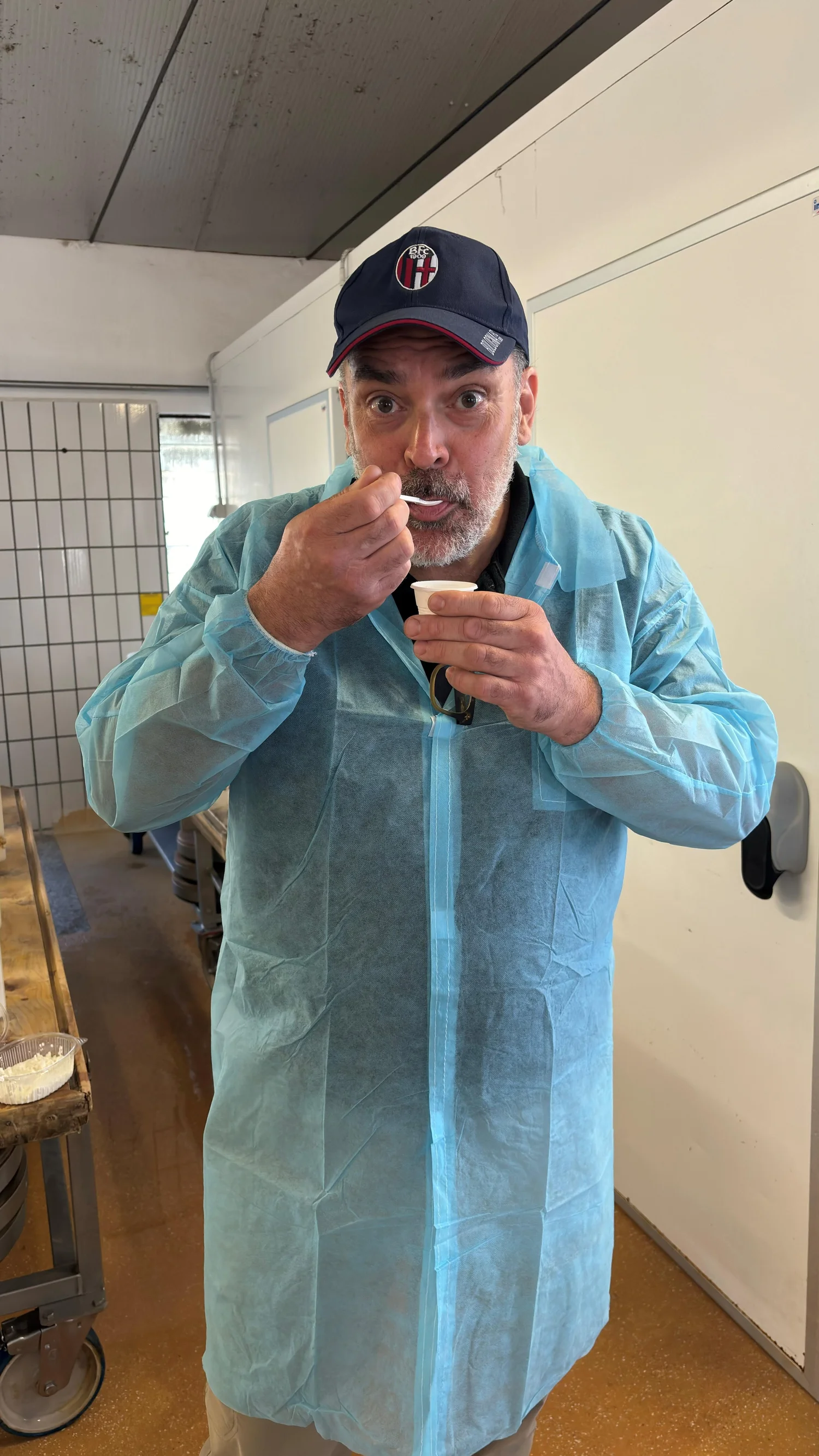Parma:
City of Gastronomy
Parma: City of Gastronomy
This city is obviously synonymous with two things—prosciutto and Parmigiano Reggiano. But Parma is so much more…
Nestled in the heart of Emilia-Romagna, Parma is a city that epitomizes Italian heritage. Renowned for its rich history, vibrant culture, and extraordinary cuisine, it’s a destination that captivates the senses and nourishes the soul.
Parma’s culinary fame is unrivaled, earning it the title of Italy’s food valley. The city is the birthplace of two of Italy’s most celebrated products: Parmigiano Reggiano and Prosciutto di Parma. But there’s so much more—Culatello di Zibello, Salame Felino, and Borgotaro Mushrooms are just a few of the region’s treasures.
Parmigiano Reggiano, often called the “King of Cheeses,” has been produced here for over 900 years using methods that have remained unchanged. Aged up to 36 months, its deep, nutty, umami-rich flavor makes it a staple in kitchens worldwide.
Prosciutto di Parma, on the other hand, is all about delicate balance. This dry-cured ham, known for its buttery texture and sweet-savory taste, is a product of the region’s microclimate and centuries-old tradition. Paper-thin slices, draped over torta fritta (Parma’s version of gnocco fritto) or paired with ripe melon, are nothing short of perfection.
The city’s pasta dishes are equally legendary. Tortelli d’erbetta, filled with ricotta and spinach, drowned in melted butter, and dusted with Parmigiano. Anolini in brodo, tiny stuffed pasta swimming in a soul-warming broth. If you’re here to eat, you’re in the right place.
Where to Eat in Parma
Michelin-Starred & High-End Dining
• Inkiostro – A playground for refined palates, blending technique and creativity into modern Italian masterpieces.
• Parizzi – A family-run Michelin-starred restaurant with impeccable execution and an excellent wine list.
Classic Trattorias & Osterias
• Ristorante Cocchi – Old-world charm, white tablecloths, and a “pork is God” philosophy. Get the salumi tipici Parmigiani, tortelli, and bollito misto.
• Osteria del 36 – A rustic spot with legendary pasta and an old-school carrello dei bolliti (a rolling cart of slow-cooked meats).
• Osteria Zingaro – Cozy and unpretentious, their tagliatelle with prosciutto ragù is a must. If you’re adventurous, try the horse meat.
• Trattoria Corrieri – A lively institution for tortelli, gnocco fritto, and all the salumi you could want.
• Ai Due Platani – Just outside the city, this trattoria is a gem. The pasta is handmade, the service warm, the wine list excellent.
• Il Trovatore – A 50-seat restaurant with seasonal dishes and serious attention to detail.
• Parma Rotta – Worth the detour for its torta fritta, silky tagliatelle, and old-school vibes.
Casual & Street Food
• I Tri Siochett – A laid-back osteria with excellent pasta and a killer wine selection.
• Meltemi – A seafood haven in a city of pork, offering fresh, Mediterranean flavors.
• Pepèn – The go-to for Parma’s famous horse meat panino. If that’s not your thing, get the spaccaballe sandwich.
• Frank Focaccia – A sandwich shop that takes things to the next level. Try the mortadella and stracciatella focaccia.
Sweet Spots & Drinks
• Ciacco Lab – Hands down the best gelato in Parma. The Parmigiano Reggiano and pear flavor is a must-try.
• Enoteca Tabarro – A cozy wine bar with an incredible selection of natural and biodynamic wines.
• Caffè Cavour – A charming old-fashioned café with great coffee and even better people-watching.
History & Culture: More Than Just Food
Before it was Italy’s gastronomic capital, Parma was a city of power and prestige. Founded by the Romans in 183 BC, it thrived along the Via Aemilia, one of the most important roads in the empire. Over the centuries, it saw the rise and fall of medieval dukes, the grandeur of the Farnese family, and the refined influence of Marie Louise of Austria, Napoleon’s second wife, who ruled Parma in the 19th century.
You see its history in every street and piazza:
• Parma Cathedral & Baptistery – The Duomo, a Romanesque masterpiece, houses Correggio’s mind-bending fresco, The Assumption of the Virgin, inside its dome. Next door, the Baptistery—built from pink Verona marble—is a stunning blend of Romanesque and Gothic styles.
• Palazzo della Pilotta – This massive complex is home to the National Gallery, where you’ll find works by Leonardo da Vinci, Correggio, and Parmigianino.
• Teatro Farnese – An awe-inspiring 17th-century wooden theater, one of the earliest of its kind, built entirely from painted wood to resemble marble.
• Teatro Regio di Parma – One of Italy’s most prestigious opera houses and home to the Verdi Festival, a must for opera lovers.
• Camera di San Paolo – A hidden treasure inside an old Benedictine convent, featuring Correggio’s Renaissance frescoes.
And then there’s the Mercato della Ghiaia, where Parma’s farm-to-table philosophy comes to life. Stalls are piled high with seasonal produce, aged cheeses, cured meats, and fresh pasta—the kind of market that makes you want to grab a basket and start cooking.
Parma is more than just a city; it’s an experience. A place where history, art, and food are deeply intertwined. Where every bite of Parmigiano tells a story, and every corner of the city holds a piece of the past. Whether you’re here for the architecture, the opera, or just the tortelli, one thing’s certain—Parma will stay with you long after you leave.



